All across America, sports fans are fiercely protective of the sporting activities they love and follow, professing against all the odds that their team or favorite player is most definitely the best.
But this type of rivalry goes way beyond the minutiae of title winners and sports personalities. Often these rifts run so deep that they can be broken down into the ruthless division of skills, equipment, and even genres.
On a mountain top, for example, has it ever really been proven that skiing is better than snowboarding? And for those who like to take to two wheels, is road racing more or less of a sport than mountain biking? Honestly, who knows.
With battles like this taking place in bars all over the world, out on sports courts, and even on the water, we have taken it upon ourselves to solve one of the most important disagreements ever known — which is better, the kayak or the canoe?
Table of contents
- From Inuits to the Olympics
- So, What Are the Differences Between a Canoe and Kayak?
- Kayak vs. Canoe Showdown
- Round 1: Is a Canoe or Kayak Better for Beginners?
- Round 2: Is a Canoe or Kayak Better for Hunting?
- Round 3: Which Is Better for Fishing, a Canoe, or a Kayak?
- Round 4: Which Is Better for a Family, a Canoe, or a Kayak?
- Round 5. Is a Canoe or Kayak Better for Camping and Long Trips?
- Round 6: Are Kayaks or Canoes Better for Seniors?
- Round 7: Which Is Better for Speed, a Canoe, or a Kayak?
- Kayak Pros and Cons
- Canoe Pros and Cons
- And the Winner Is…
From Inuits to the Olympics
While modern-day paddlesports are more popular than ever, their history lies in the Inuit and Aleut tribes of the Arctic North. These historic people used these watercraft for transport and not for fun.
In modern times, the Olympic Games host ten canoe and kayak events. With lots of sprint and slalom teams to choose from, it should be no surprise that so many paddlesports enthusiasts are picking up their paddles and heading out into the water.
Both activities are exhilarating and offer a ton of physical and mental benefits. Now, for the first time ever, we really break it down for you point by point.
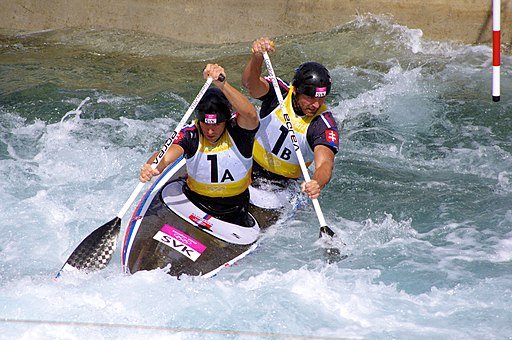
So, What Are the Differences Between a Canoe and Kayak?
There are important differences between both types of watercraft. These may not be so easily obvious to the untrained eye but are immediately identifiable to professionals. If you want to succeed in either vessel, you should probably get these basics down pat.
Paddles
Paddles are an intrinsic part of pulling yourself successfully through the water. They are also, in this instance, one of the biggest differences between kayaking and canoeing.
When you take to the water in your canoe, you will typically use single-bladed paddles that are perfect for long and stable propulsion. By alternating your stroke from one side of the craft to the other, you and yours can gracefully make your way through the water.
On the other hand, your kayaking counterparts will be propelled using double-bladed paddles that offer greater maneuverability. This allows them to zig-zag their way through the water like a pro. These double-bladed paddles are also better for picking up speed, so be ready for them to wave goodbye as you pass it on the water.
Seating Position
Canoe lovers will be accustomed to sore knees and the need for thighs of steel if they opt for a canoe’s traditional kneeling position.
By wedging the knees against the boat’s side, you can achieve optimum reach for more powerful propulsion. Modern canoes do allow you to paddle perfectly well while sitting on your backside. All you have to do is place your knees up against the top edge of the boat’s rim.
In a kayak, however, you are seated lower down in the water. You will definitely need to be sitting on your derrière for the duration of your journey. Thigh pads should support your hips, and you’ll need to use thigh braces.
Open Seating for Canoe vs. Closed Seating for Kayak
The size and design of the different types of craft also affect how you perch when paddling. Like a stripped out, mini rowboat, canoe seating is open plan and easy to get in and out of.
In a kayak, however, you have to ease yourself gently into a semi-covered, enclosed seat that gives the feeling of being in the water rather than on top of it. Sitting in the hull of the boat helps to increase speed and maximize maneuverability.
That said, those clever kayaking types have also come up with a sit-on alternative to traditional sit-in models. While you will need different types of paddles to motor along in one of these beauties, you will be limited in terms of top speed. Sit on tops are a good alternative to canoes for recreational paddling on lakes, slow-moving rivers, and protected coastal waters.
Kayak vs. Canoe Showdown
Over 7 rounds we will crown a winner. Let the showdown commence!
Round 1: Is a Canoe or Kayak Better for Beginners?
If you literally cannot wait to take to the water, consider a kayak first. Their narrow, lightweight design makes them easier to maneuver, even for novice paddlers. Additionally, the seating position allows you to feel a part of the boat itself and, in turn, more confident in the water.
A rookie kayaker can pretty much be up and running in just a few hours. The stability they offer makes them easy to control even when the waves are bouncing away beneath you.
However, if you want to advance to an expert level, mastering a kayak like a pro can take some serious man (or woman) hours in the water.
Even though beginner kayakers can enjoy the exhilarating rush of whitewater rafting in their own little vessel, in order to traverse wild waters you need to be an expert at creeking, playboating, and even being able to squirt (you’ll know what that means when you get there!).
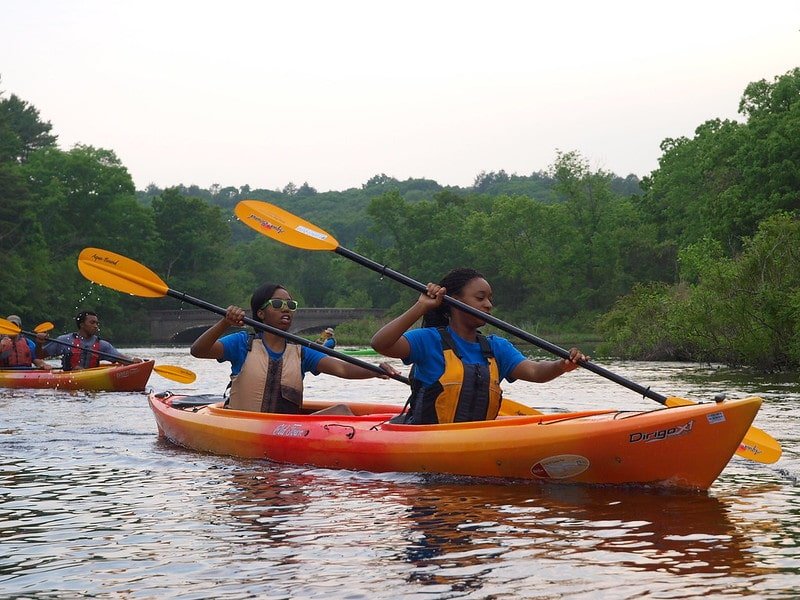
Kayaks are also easier to carry out of the water. You can totally take to the water on your own, making it the perfect sport for the friendless and the antisocial.
If you choose to canoe, it will take you longer to find your water wings, to begin with. Canoes can feel super unstable to start with, and mastering an efficient paddling technique is key to get you moving. If you find yourselves spinning in circles on the water, don’t despair, you’ll get there.
Once you are able to find your balance and paddle proficiently, the sheer joy of canoeing will finally hit you. Being able to glide effortlessly through calm, still, waters truly is a thing of beauty. Once you have learned how to work as a team, alternate your paddle strokes, and remember that you must never, ever stand up in your canoe, you are pretty much home and dry.
The Winner
“Kayaking is easier to start off with, but it can take plenty of practice to paddle like a pro. Canoes conversely are more difficult to get to grips with in the beginning. But once you have mastered it, you can enjoy endless hours of waterborne fun. In our opinion, the kayak is the best craft for beginners.”
Round 1: KAYAK 🏅
Round 2: Is a Canoe or Kayak Better for Hunting?
If you like to hunt, you’re going to want a vessel that can comfortably haul you, your gear, and your prize catches without too much drama. While kayaks are super fun and trendy, you may find them less practical when it comes to bringing home your prey.
With their narrow shape and low down seating position, kayaks are great for angling. But if you are hunting anything larger, you may struggle to find the storage space you need.
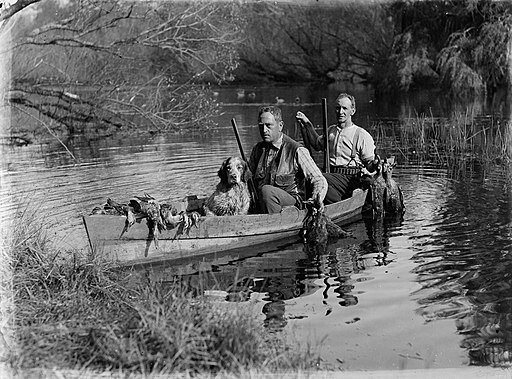
That said, modern-day kayaks are easy to handle on your own. You can squeeze them into smaller creeks while still being able to shoot from them. If you want to navigate tight spaces to find your prize, then a kayak might work better for you.
When it comes to canoes, they are able to offer exceptional stability once you have mastered how to paddle them. Even the more compact canoe models offer impressive gear-hauling capabilities. Their cradle-like design also acts as a useful container space for your bow or gun, as well as your all-important backpack, tent, and snacks.
Another consideration if you are planning on hunting waterfowl is you will need decoys. Canoes certainly offer enough space to allow for a full day hunting. If you are planning to slip downriver and jump shoot some ducks, you will need to take as many as ten decoys with you.
This, combined with the need for netting, rods, life jackets and safety gear, make the canoe a more practical choice. You will invariably have more space to store it all in a canoe.
The Winner
“While you certainly can have some fun hunting with a kayak, a canoe will give you more space on the way downriver, and all that additional space you need to bring back your prize catch as well.”
Round 2: CANOE 🛶
Round 3: Which Is Better for Fishing, a Canoe, or a Kayak?
Fishing is one of man’s greatest ever inventions. Hour upon hour spent on the open water, just waiting to get a bite, is one of the most peaceful pastimes you could ever dream of. That said, if you are planning on sitting on your backside for hours, comfort should be key.
Kayaks are a little bit limited space-wise, meaning there is virtually no opportunity to stretch your legs, so to speak. In a canoe, however, you can crouch, kneel and twist when you need to, making the canoe more comfortable for longer fishing expeditions.
Obviously, if you are planning on sharing the experience with a friend, a canoe will give you the space you need to enjoy a nice bit of tandem fishing, while still giving you enough room to stash your catch. The physical space between also helps to reduce the likelihood of hooking your partner on your backcast!
Fishing from a canoe also allows you to use a much more natural cast position. That being said, you will need to alter your throw from your usual land-based technique for fear of tipping that baby over! The higher seating position also allows for better vision out on the water.
While kayaks are smaller, and on the surface of it, less practical for fishing, there is actually an entire industry that has grown out of kayak fishing, making them a surprising superior vessel for a professional catch.
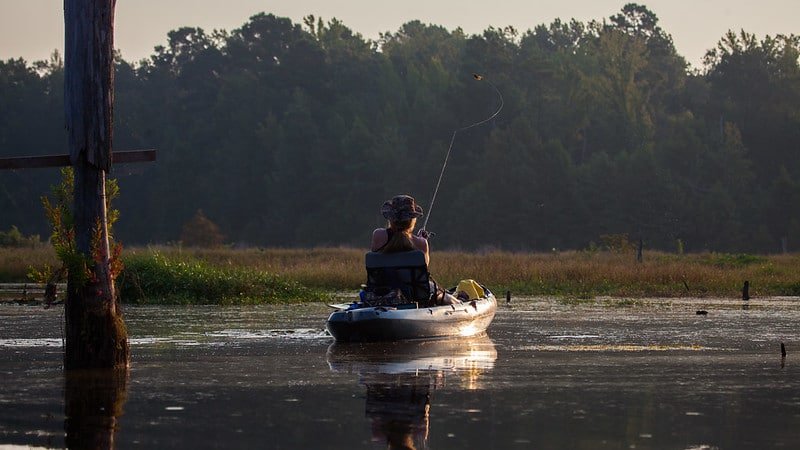
Their more compact dimensions are pretty beneficial when it comes to finding underfished and more remote waters. With kayak fishing being all the rage right now, you can pretty much rig up as many features to achieve your personal best as you can with a canoe.
Speedier, smaller, and ultimately offering much more maneuverability on the water, kayak angling is the coolest way to catch fish.
The Winner
“While traditional paddlesports enthusiasts may maintain that the humble canoe offers more storage space and stability for open water fishing, it is the ninja-like capabilities of the kayak that will probably see you get a better catch in less-used waters. So, surprisingly in this instance, the kayak takes it.”
Round 3: KAYAK 🏅
Round 4: Which Is Better for a Family, a Canoe, or a Kayak?
Why not turn your new-found hobby into fun for all the family? After all, quiet time on the water is so overrated!
Joking aside, getting everyone out on the water is actually a really nice way to spend time working together. Traverse your way through the water as a family while taking in plenty of fresh air! It’s worthwhile getting to enjoy the scenery from a truly unique perspective.
Canoes usually offer the most amount of space and versatility when it comes to carrying multiple adventurers. That said, the bigger they are, the heavier they can be. This is a big consideration when you have to pull it out of the water and rack it on to your car.
Bigger canoes can also be harder to maneuver. This is definitely a consideration if you are taking little kids with you, who won’t really be able to help you when it comes to paddling.
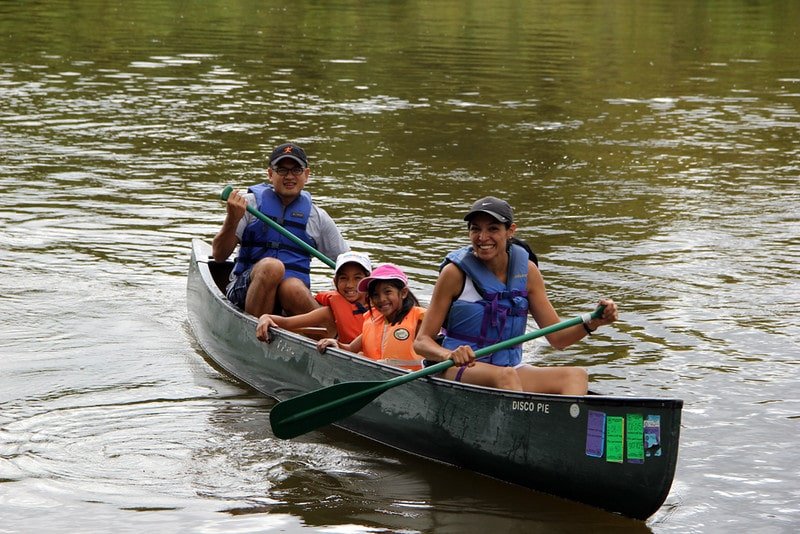
There are lots of family-friendly canoes out there, available in a wide range of different styles and designs. While seats may be a little uncomfortable, and you will need to put in some on-land paddling practice before you hit the water, a canoe that can grow with your family is a worthwhile investment.
Kayaks can be kind of family-friendly depending on the size and age of your companions. Young children can ride in the center compartment as a duffer, although they may not be able to help you propel the boat. Older children should be able to handle their own kayak sailing alongside yours. This does, though, mean investing in more than one kayak, which could become a pretty expensive business.
The Winner
“While kayaks are easy to maneuver for older children, you will never be able to fit as many kids, gear, or hunting prizes on a kayak as you will on a canoe. And for that very reason, canoes win this time around as they offer a much more practical and affordable approach to paddling with the family.”
Round 4: CANOE 🛶
Round 5. Is a Canoe or Kayak Better for Camping and Long Trips?
Taking a trip out to the backcountry can be a spectacular adventure and what better way to get there than on the water. Leave the RV in the parking lot and jump in your kayak or canoe to spend nights under the stars in remote and otherwise unreachable locations.
Camping in the wild requires some forward planning. Especially if you want to get there using paddle power, you will need to consider the logistics of hauling your gear on the water. This is where a canoe really comes into its own.
As a bare minimum, you will need to take a tent, sleeping bag, food, water, and a change of clothes. Depending on where you are heading and how long you are intending on staying, you may even need to lug a camping stove, pots and pans, extra fuel, lighting, and maybe even more.
A canoe offers enough space to carry all of your essential camping kit with you. Use dry bags to keep your gear protected from splashes and unwanted submersions, and be sure to distribute the weight evenly across the hull. Luckily, canoes also offer easier access for packing and unpacking, as well as a practical portage for trips on land.
When it comes to the usually very capable kayak, their lack of storage space is an undeniable issue. That said, kayaks are designed to hold a lot of weight while still being able to move efficiently through the water, provided you can cope with minimal camping equipment and know-how to balance it perfectly.
Kayaks can also move faster through large bodies of water and are often a better fit for longer journeys. Kayaking can also get you into smaller creeks and watery nooks and crannies that you may otherwise not be able to reach.
The Winner
“All things considered, your canoe will be better able to haul your gear, making for a more comfortable camp out. The kayak, on the other hand, may call for a more minimalist approach, but its sheer ability to effortlessly handle long distances and travel at speed makes it a worthy opponent on the water. For that reason, we are going to call this round a draw — choose either, they will both get you where you need to be.”
Round 5: DRAW ↔️
Round 6: Are Kayaks or Canoes Better for Seniors?
Paddling into old age is the real deal for many senior water enthusiasts. Whether they have a lifetime of boating experience behind them or are a recent convert to the joys of open water, age is still nothing but a number when it comes to the great outdoors.
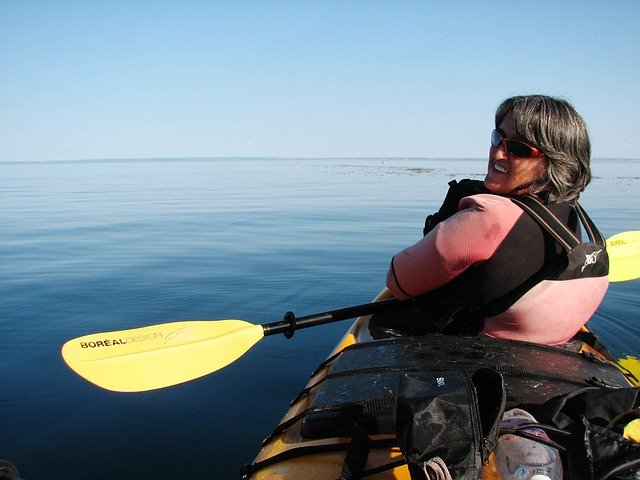
Obviously, some practical considerations need to be made for older paddlers. Being able to get in and out of the craft, for example, is important for paddlers of all ages. Canoes are, on the whole, easier to enter and exit, as long as your balance is still pretty good. They also offer a little more room around the seating area, as well as the scope for shifting your weight and moving a little bit if you start to feel stiff.
Surprisingly though, kayaks are not out of reach of senior sailors either. If they offer enough back support and the cramped quarters aren’t too hard on the joints, there is no reason why our older friends and family members can’t take to the water in a kayak too.
Whichever craft you choose, both offer a great opportunity to enjoy some all-important outdoor time. The motion of the water is a natural stress reliever, and the gentle paddling motion is an excellent form of exercise.
The Winner
“If you can balance well enough to confidently get in and out of the craft, and are not averse to sitting in the same position for a period of time, there is absolutely no reason why canoeing or kayaking should be any different at 70 years of age, or 17 – so it’s a win-win all round for senior sailors.”
Round 6: DRAW ↔️
Round 7: Which Is Better for Speed, a Canoe, or a Kayak?
Because both canoes and kayaks are displacement hulls. This means the top speeds they can achieve is both a function of their length and the effectiveness of your paddling technique.
In theory, the longer a boat is, the faster it has the potential to go. If you consider that a 16-foot canoe can go just as fast in as a 16-foot kayak, in theory, there should be no competition here at all.
But — and here comes the science — a skinny kayak is easier to paddle and speed through the water as it has a less wet surface area and, therefore, less friction than a fat canoe of the same length.
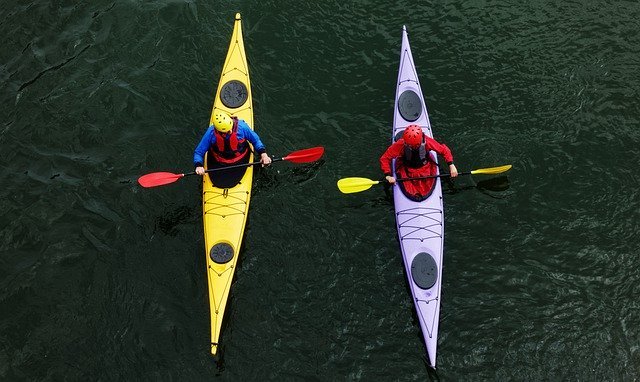
The fact of the matter is that kayaks are far easier to paddle, making it feel like they are whizzing past the canoes and other watercraft on lakes and open water. Kayaks are also perfect for white water rafting, which definitely gives the user the thrill of traveling at speed.
While technically you could achieve the same speeds in both kinds of craft, it is the narrow design and ease of paddling of the kayak that makes it feel speedier and much more fun on the water.
The Winner
“With a well-practiced and perfected paddling technique, it is easier to reach your top speed in a kayak than it is in a canoe. Being larger, heavier, and often more cumbersome to paddle, it can take time to reach a top speed in a canoe.”
Round 7: KAYAK 🏅
Kayak Pros and Cons
If you are yearning for open water adventures, a kayak could be perfect for you. But before you rush out and buy one, consider the following:
Pros
✅ With their narrower and skinnier profiles, kayaks can be speedier than canoes.
✅ It is easy to pick up the basics of kayaking to get you feeling confident in the water quicker.
✅ Being positioned closer to the water makes it easier to handle choppy conditions.
✅ The covered-in seating of a kayak can help to keep your gear better protected (providing you don’t capsize of course).
✅ With their double-bladed paddles, they are far easier to paddle.
✅ Lightweight and easy to steer into small creeks and remote locations, they are also much more useful for fishing.
✅ Kayaks are pretty cool, and everyone wants one.
Cons
⛔️ That same sleek and skinny design ultimately leads to less storage space in the hull.
⛔️ They are far easier to flip, which can make keeping you and your gear dry pretty tough should the worst happen.
⛔️ You will usually have to endure a much wetter ride.
⛔️ Despite looking smaller, kayaks can be heavier and harder to portage than their canoe contemporaries.
Canoe Pros and Cons
If a more traditional canoe is calling your name, think about the pros and cons before you buy:
Pros
✅ Canoes are larger and offer a much more practical and usable storage space.
✅ It is much easier to climb in and out of a canoe.
✅ They are lightweight and easy to portage between waters.
✅ If you are looking for a more gentle ride in flat waters, a canoe will allow you to gently breeze through the water.
✅ You can usually enjoy a dryer ride on a canoe.
✅ Multi-person canoes are perfect for trips out with family or friends.
✅ Being more stable in nature and the ability to move around in the craft is perfect for wildlife photography or watching.
Cons
⛔️ Canoes are generally slower than kayaks.
⛔️ It takes a lot more skill to master a canoe in the first instance.
⛔️ Canoes can be tricky to maneuver in high winds.
⛔️ A canoe can be a far more expensive investment than a kayak.
And the Winner Is…
So, that’s the matter settled then — kayaks are better than canoes, but only just though.
While a canoe is still an awesome craft to take into the water in, kayaks are easier to maneuver, easier to paddle, and just generally a little bit more awesome if storage space isn’t your biggest consideration.
Kayaks are also becoming much more popular than canoes. Hit up any of your local lakes or open waters, and you will undoubtedly see lots of little kayaks bobbing away on the water.
Plus, they are incredibly well suited to the buffering and bouncing of white water rafting, which is one of the most popular activities for adrenaline hungry thrill-seekers the world over.
Affordable, easy to buy, and a ton of different types of kayaks available to suit every type of paddler, kayaks will continue to be cool for many more years.
Canoes are lovely, let’s not forget that. But when it comes to practical, affordability and ease of use, the humble kayak takes the prize this time around.
Paddle On!




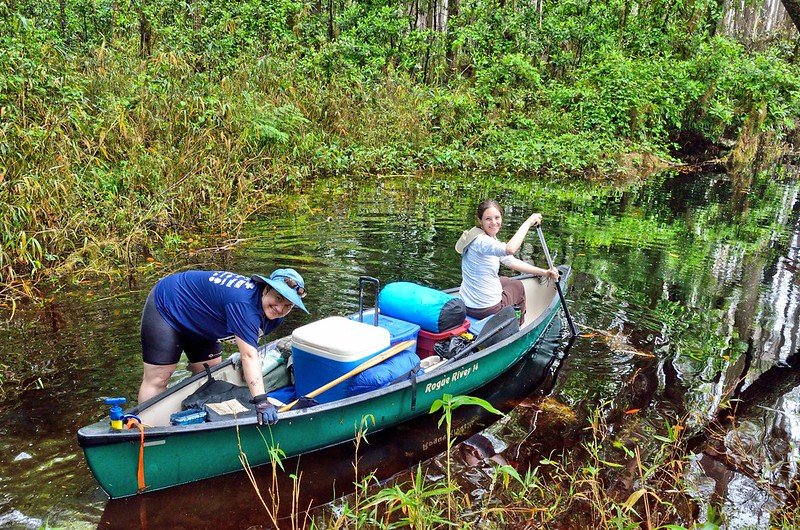
Quite great explained article but iam still confused that which one should i go for?
Lol, well the point is to find out which criteria you’re most concerned about and make your decision based on that. It will differ for everyone. Hopefully you’ll figure it out soon!
After 65 years of power boating (and building a dozen small boats) I graduated toa kayak in 2021 and couldn’t be happier! After getting soaked a few times getting in and out, I developed a way that (although hardly graceful) does the job. And living where I do, in Rock Hall, MD, the area is a paradise for calm water kayaking.
Try it–you’ll like it!
Jeff